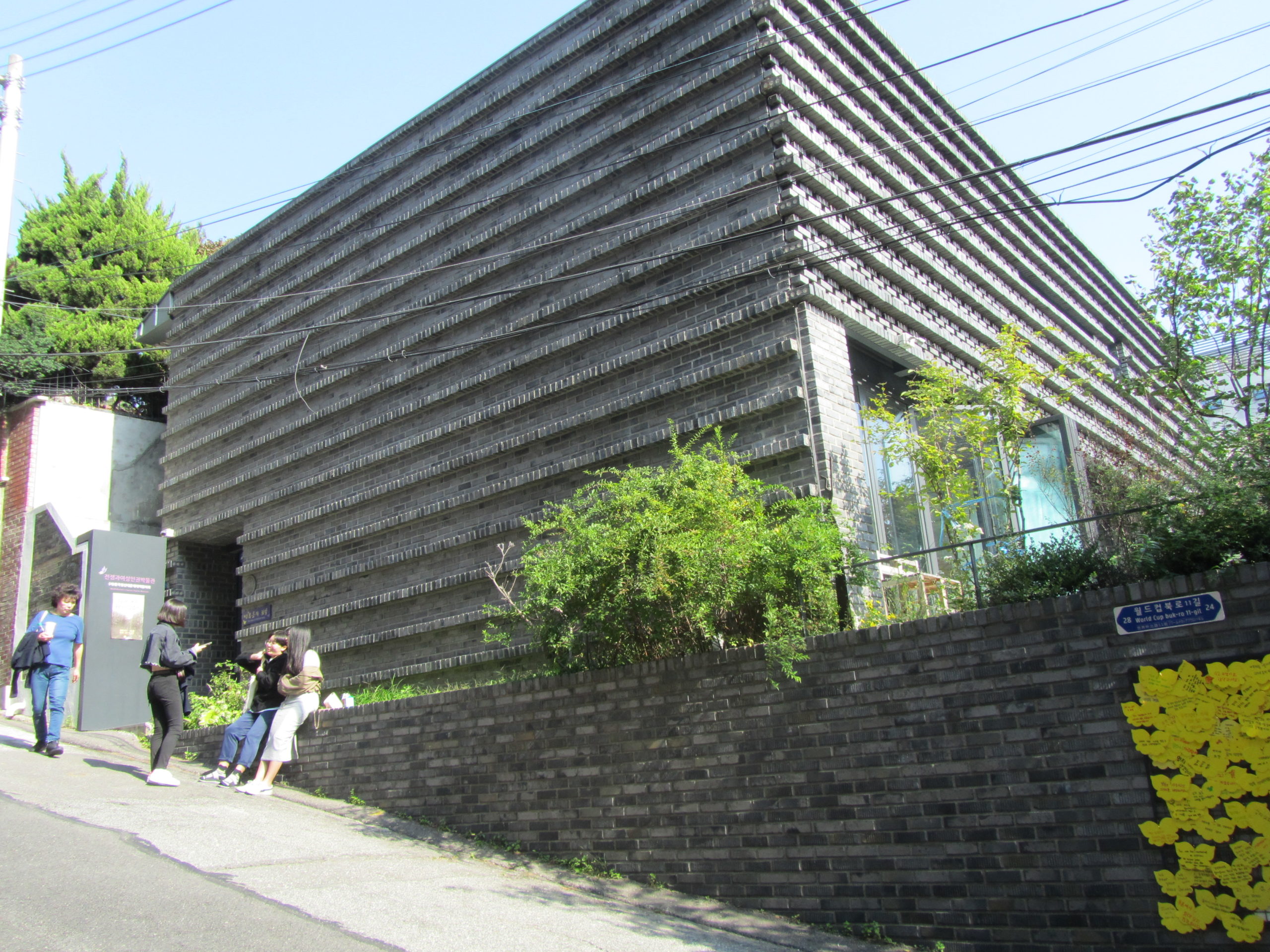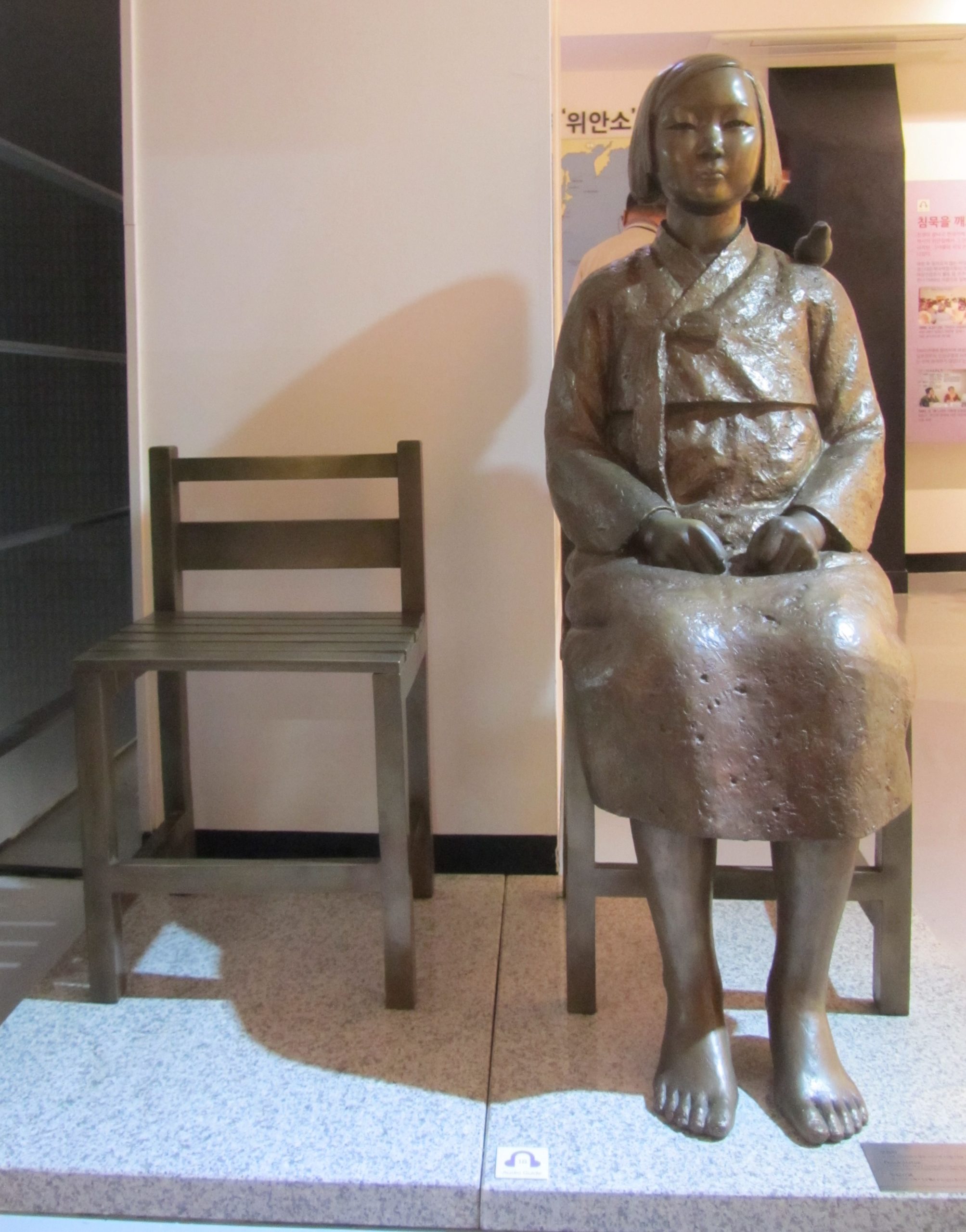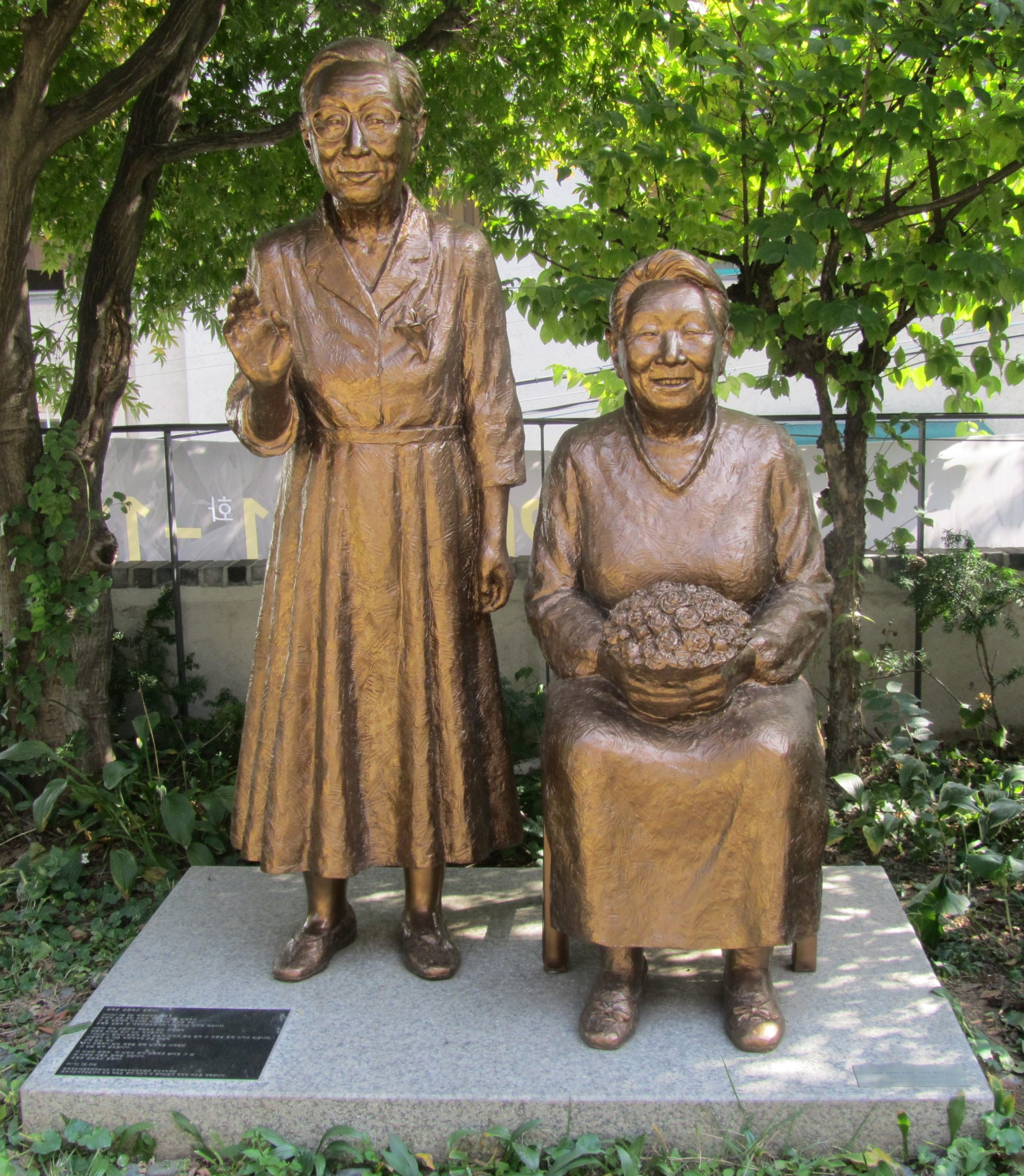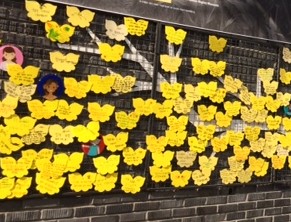After having gained a very good first insight into the issue of Japan’s military sexual slavery system in the woman’s museum in Tokyo, I visited two more of the so called ‘comfort-women’s’- museums. I went to South Korea and to Taiwan. The women of these countries were the victims of the Japanese aggressors and had to suffer a lot as sex slaves.
Warning! The following text may shake your state of mind.

War & Women`s Human Rights Museum 20, Worldcupbuk-ro 11-gil Mapu-gu Seoul 03967, Republic of Korea (ROK)
Born in Korea in 1929 – at the age of 16 drafted into the first Women’s Voluntary Service Corps and sent to a Japanese airplane factory – exploited by hard labour – starving – escaped from the factory – caught and raped by a Japanese officer – taken to a socalled ‘comfort station’, ……….. This is the beginning of a short biography that describes crucial events of a woman’s life. Although she had to endure a lot of harm and pain she could overcome her painful life as a victim and turn into a human rights activist. In 1992, at the age of 63, nearly 50 years after the end of World War II and the end of her life as a sex slave, she gained power and courage to make her bad experiences public. And she began to fight for her rights – her name: KANG DUK- KYUNG “HALMONI” (1929 – 1997). A life not only as a victim but also as an activist. Thus she is one of the 5 women the museum chose for its admission tickets. By reading some sentences on the back side of your ticket you do the first step into the life of a Korean sex slave, lovingly called “halmoni” (= grandmother) in the texts.
When opening a door that leads to a small corridor I’m immediately overwhelmed by an ear-deafening noise: marching soldiers and cannon fire. Step by step I’m stumbling forward on a gravel road, leading my deeper into the painful history of the ‘comfort women’. On the left wall of the corridor I look at painted girls, their heads bent, moving forward like shadows without knowing where they will end up – young women on their way into their future lives as sex slaves. From the opposite side faces of elder ‘comfort women’ are looking at the newcomers. What would they tell them? Should they warn them? Console them? Should they shout or whisper?
Some last steps bring me down into the basement. Here I can listen to and look at former sex slaves who tell about their painful lives. It’s very touching to listen to their stories via my audio guide in English. Time and again they are overwhelmed by emotions; try to keep back their tears. Sometimes, when talking about the cruelties and the injustice done to them, they need a pause to gain back mental strength for continuing. Listening to their voices makes me feel uneasy and the small room of the basement feels like a prison cell. So I feel relieved when I leave this dark room and go up a staircase into the light. On my way up I pass by the “wall of appeal”. It exhibits photos of former sex slaves and paintings about how they were taken to ‘comfort stations’ by Japanese soldiers. I can read some statements of victims, engraved on the wall. The higher I go up the more I feel hope expressed in their words:
These children should live in a peaceful world.
My wish is that I may hear even a word of sincere apology.
How bitter a life I shall live! Bring back my youth!
So I reach the second floor and step into the Room of History. Exhibited objects and documents bear witness to the reality of the rape camps and its cruelty, again and again tried to be denied or extenuated by the Japanese: military documents that prove the construction of comfort stations; valueless military currency used as payment for sex services, including price lists with different prices depending on the rank; admission tickets and discounts for ‘comfort stations’, condoms with cynical names like “Rush No 1” or “Assault No 1”, photos and diaries telling about the soldiers’ experiences while visiting ‘comfort stations’ with friends; ‘comfort women’ waiting to see a doctor for the regular check-up to guarantee the safety of the soldiers; photos of injured sex slaves including medical findings, deriving from obsessive violence, torture and rape; illustration of a rape camp with its “rooms” for raping women in the centre and soldiers standing in a queue in front of them.
In case of Korean women in the rape camps I get to know that they were between 14 and 19 years old, the youngest only 11. After the end of the war their sufferings continued. Many of the sex slaves suffered from physical diseases and/or posttraumatic stress disorders. When they went back into their home countries they were humiliated and degraded again. In the patriarchal societies they were seen as impure. Many women got divorced as soon as their husbands figured out that they once worked as `comfort women`. No wonder, that the women kept silence for a long time.
In war and in peace, the husbands of raped women place a major burden of blame for the awful event on their wives.
Susan Brownmiller (geb. 1935), American journalist, author, human rights and feminist activist, 1975
After these depressing contents it’s good to hear something about survivors who broke the silence. It started with the first witness KIM HAK-SOON “HALMONI”. As Japan persistently refuses to admit its responsibility for the war crimes done on women and ignores the demands of the victims, South Korean and international organizations support their fight for justice and acknowledgement. In the year 2000, the Women`s International War Crimes Tribunal on Japans Military Sexual Slavery” was held on behalf of all women of the world. It was a powerful sign by the global civil society to end the impunity of wartime sexual violence and to persecute and punish the perpetrators. Meanwhile many states urge on Japan to recognize its guilt.
Something special and very impressive are the socalled “Wednesday Demonstrations”, that are held in front of the Japanese embassy in Seoul since 1991. With them survivors and their supporters want to reach that the Japanese government takes over responsibility for the rape camps called ‘comfort stations’ and its victims. In addition, they want that Japan apologizes for its cruelties and thinks about reparation payment. At the 1000th demonstration, in December 2011, they set up the Peace Statue of a Girl, a copy of which I can see here in the museum.

Peace Statue of a Girl, Kim Eunsung & Kim Seokung: Korean artists; deal critically with Japan`s history in their art works; created also “The Peace Statue of a Girl” for which they had been threatened.
My audio guide offers a lot of interesting details about it: The girl is looking at the Japanese embassy, looking into the harsh reality that the Japanese government refuses to acknowledge its guilt. The bird on the girl´s shoulder symbolizes the bridge that should connect the survivors with those former ‘comfort women’ that already have passed away. The chair besides the girl is for us, the visitors. If you want to show your solidarity with the demonstrators, please sit down and take a picture.
Within a special exhibition the museum reflects on the dark side of South Korea`s history. It gives evidence of the war crimes of its soldiers done on Vietnamese women during the Vietnamese War.
In addition, the museum focuses not only on the past but still on the present. It documents the fact that raping women is a central issue in the various conflicts on our planet, even in the 21st century. You just need to think of Bosnia, Sierra Leone, Sudan, Congo, Afghanistan, Iraq…
The East Congo, I hear from my audio guide, is known as the “capital of rape”. The following sentence is deeply engraved in my brain:
It`s more dangerous to be a woman than to be a soldier in modern conflict.
Not only women are mistreated in wars, even children. It´s just shocking to look at the map of the world, titled: “Children in armed conflicts” and to read about children as soldiers and girls raped in wars – worldwide.
After my walk through the museum I go to the museum`s garden. The statue “Kim Bokdong and Gil Wonok are Peace” should enable to view at the future with hope. It was set up at the International Women`s Day in 2012 and presents two former sex slaves and later human rights activists: Kim Bokdong and Gil Wonok.

Kim Bokdong and Gil Wonok are Peace
I was taken when I was 13. Because I`ve experienced the pain myself, I know, how much pain other sexual violence victims are suffering from. I want to give strength to these women enduring the some pain as us.
Gil Wonok; 91 years old
Because of their own bad experiences these two women promised to donate their reparation payments – in case they ever would receive money from the Japanese government – to victims of sexual violence in armed conflicts. To honour their decision the “Butterfly Fund” was founded. The butterfly symbolizes the wish to all women that they may live without discrimination, suppression and violence. Thus, as a visitor, you are invited to share your thoughts, wishes or promises for those women suffering from any kind of violence. You just write your words on a yellow butterfly made of paper and put it on the museum`s wall when leaving it.

Butterfly Fund
Marianne Wimmer, collector of women’s museums